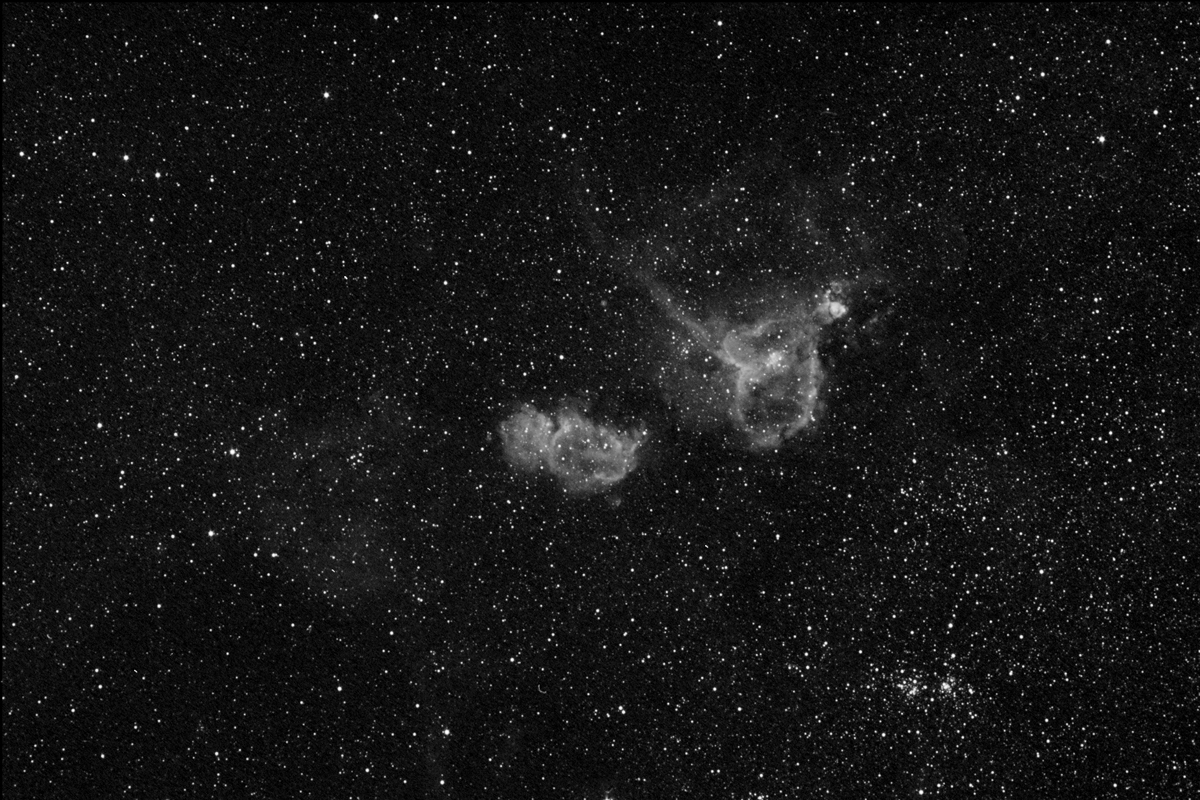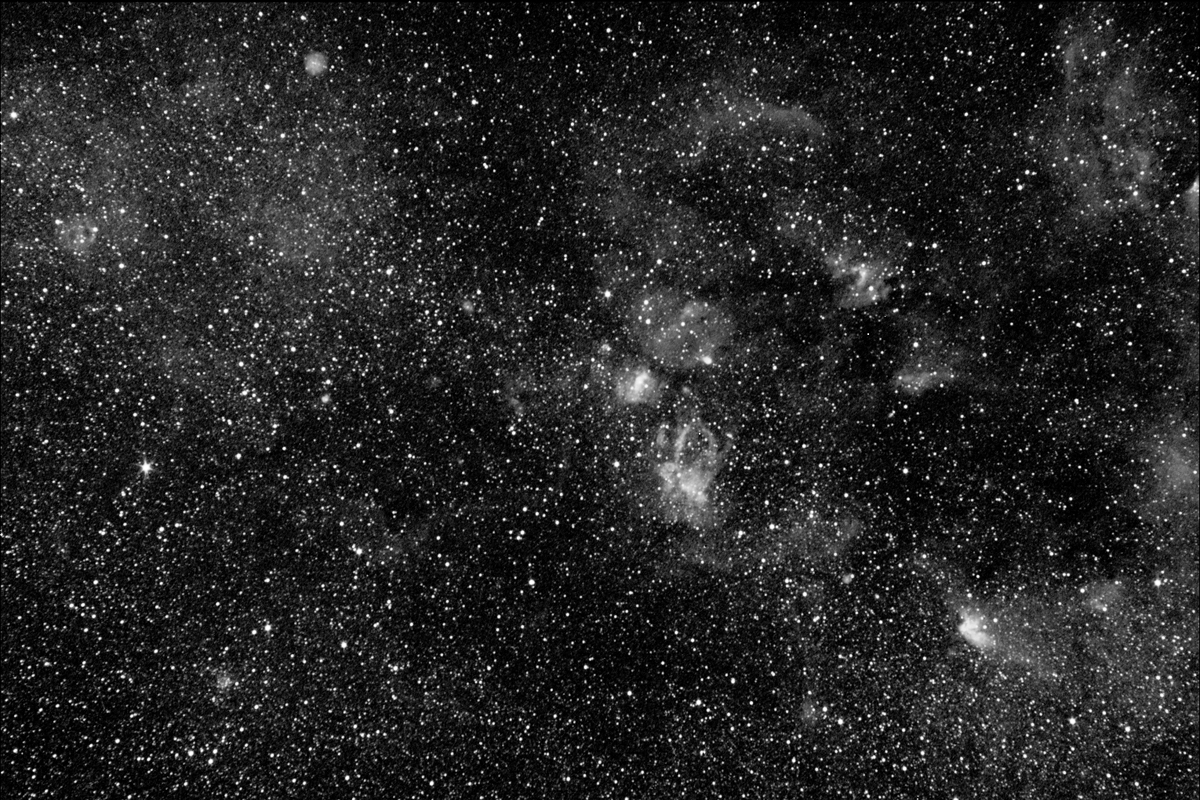
Combination of 12, 5 minute exposures using an H-alpha filter.
SBIG ST-8XE CCD. 50mm Nikon lens at f/4.

Almost totally hidden below the northern horizon from Australia, lies the constellation of Cassopeia. As the constellation encloses a rich portion of the Milky Way, Cassopeia abounds with interesting objects of all kinds, especially open clusters. It has been intersting to explore this region since moving to the northern hemisphere.
This general region would be the northern hemisphere equivalent to the Puppis-Vela region for southern observers, although not as rich. As the images below show, the region contains numeros emission nebulae.
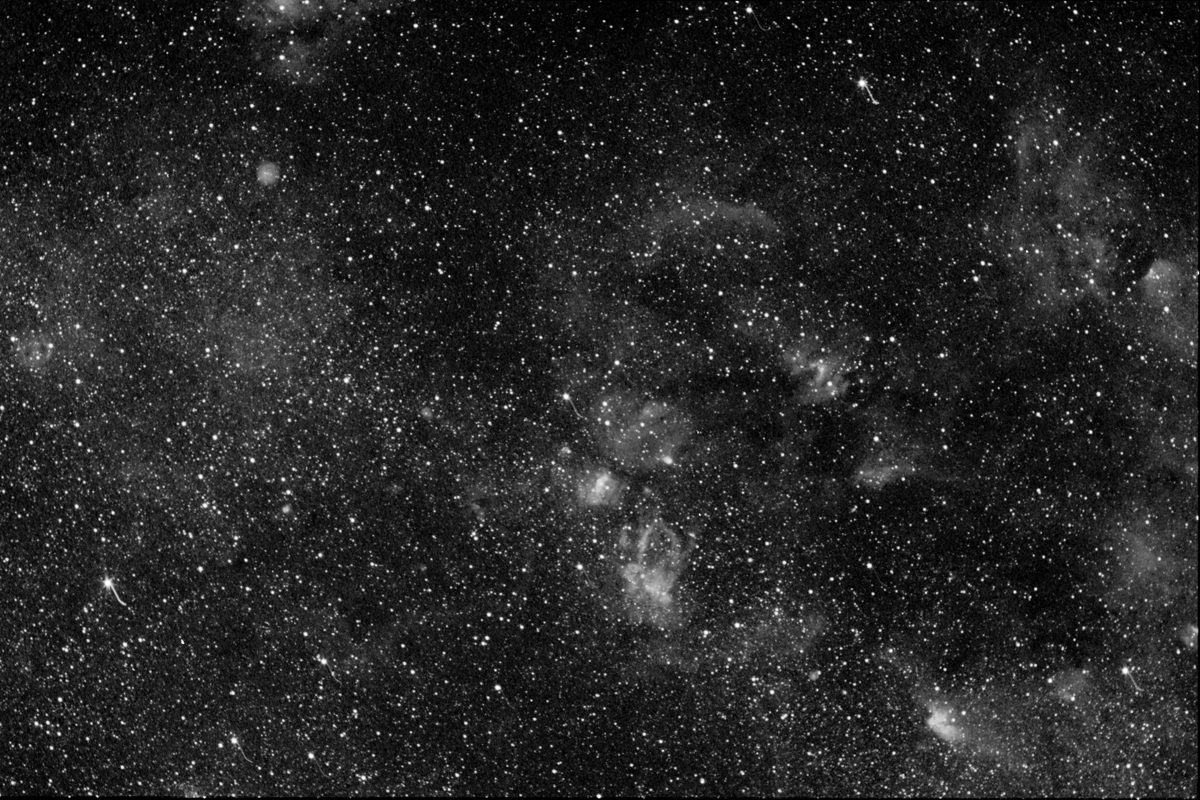
The above image is centred close to NGC 7635, also known as the "Bubble Nebula".
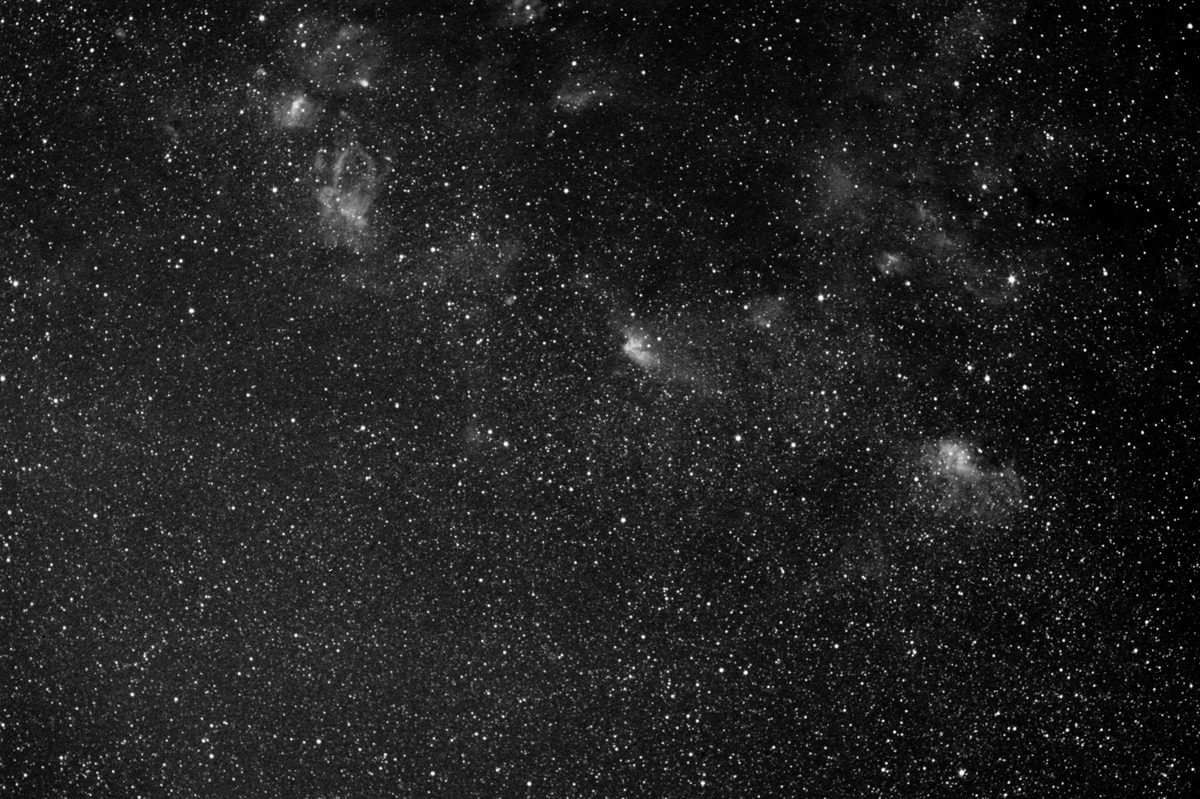
The above image is centred close to NGC 7635, also known as the "Bubble Nebula".
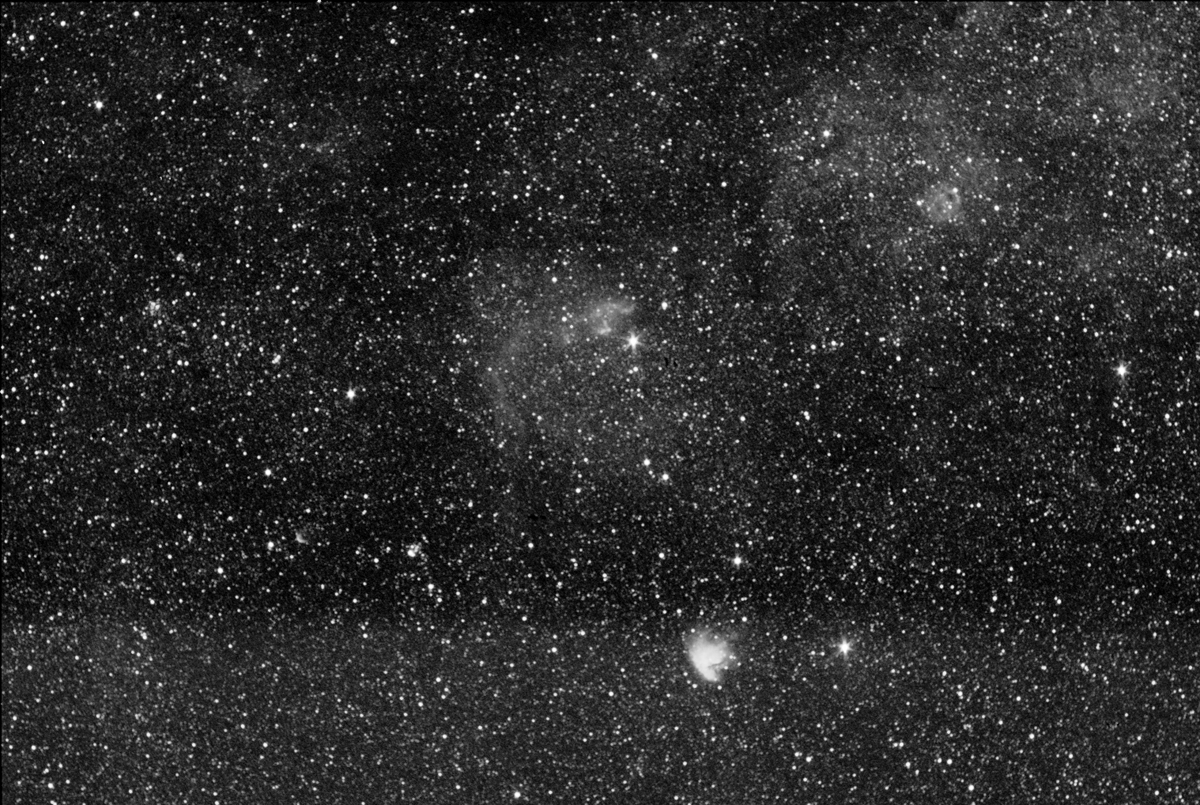
The central region of Casseopia. The bright nebula towards the bottom is NGC 281, also known as the "Pac-Man Nebula".
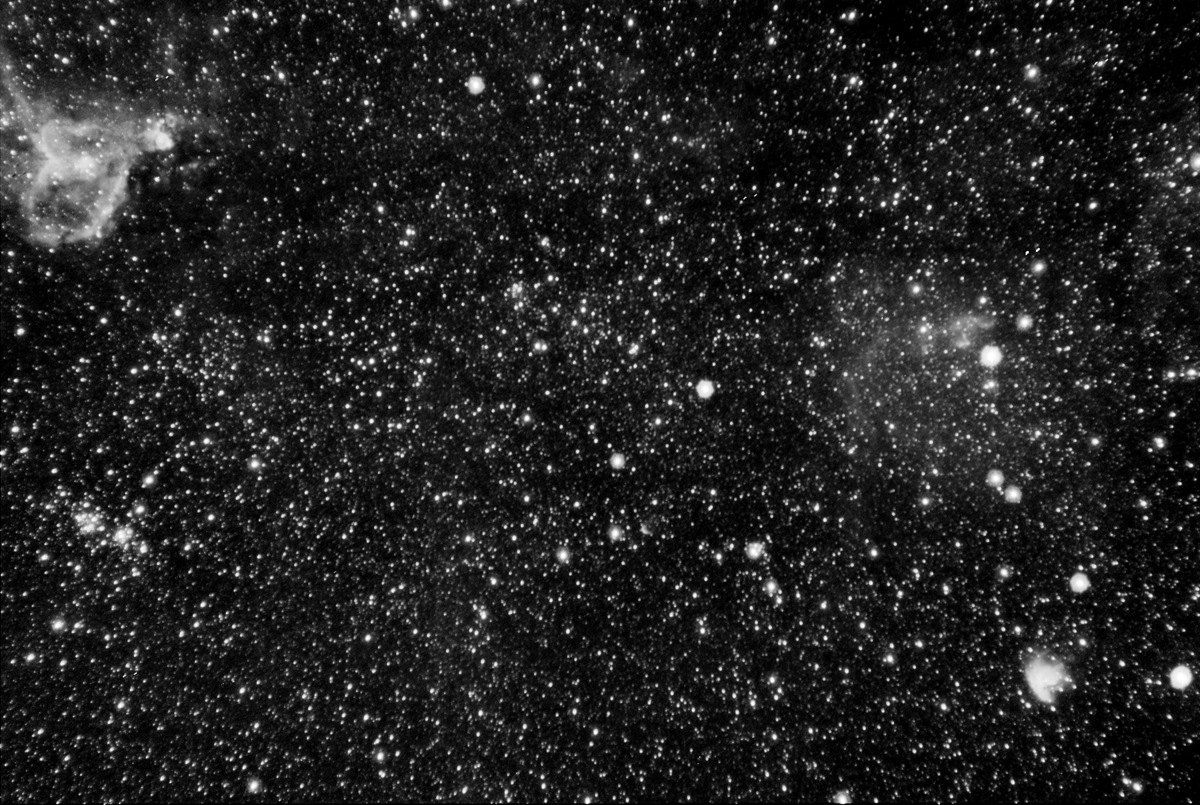
The eastern region of Casseopia. This image shows the effect of opening the camera lens wide. The stars appear quite bloated and the focal ratio is too small for the filter to work correctly. Compare the stars in the images below which were taken at f/4.
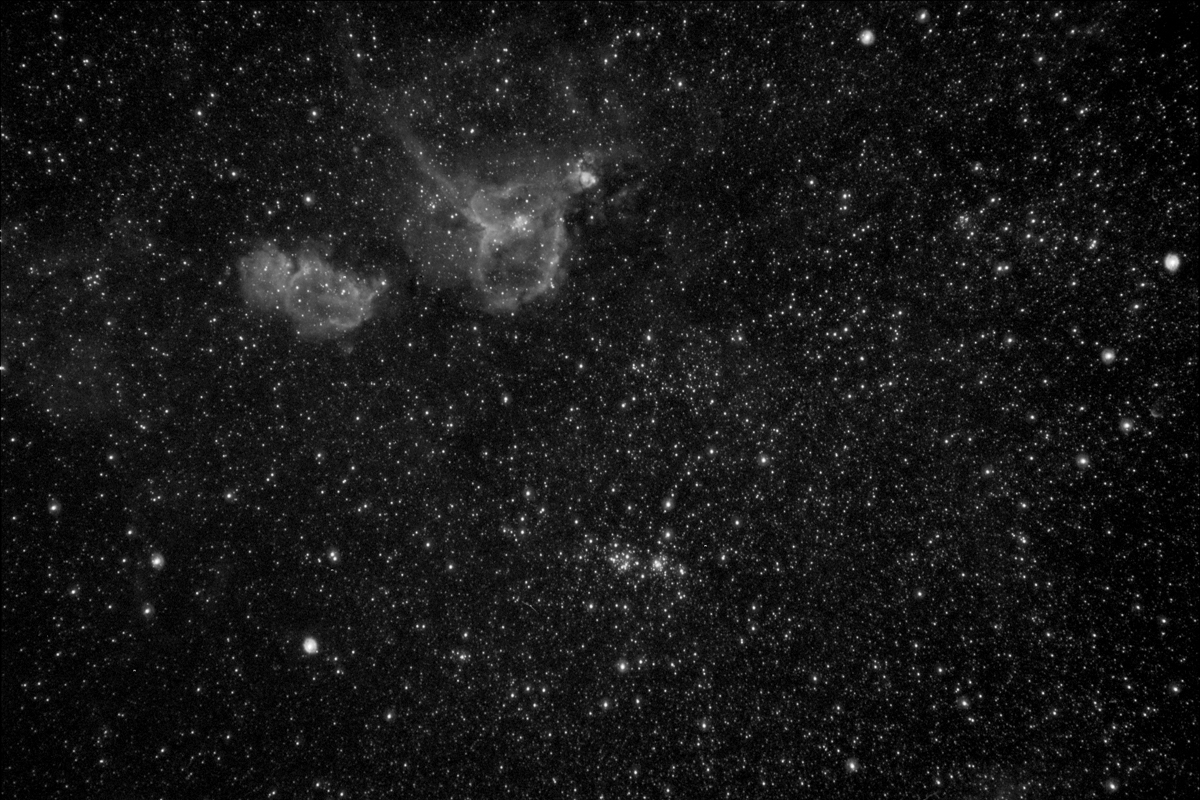
The large nebula near the centre is IC 1805, also known as the "Heart Nebula".
